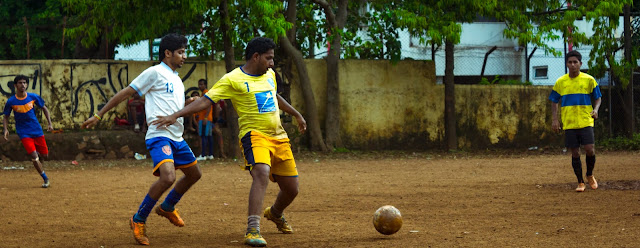Off the Gulf of Cambay in 1721 inside the flourishing
port town that is its eponym, Lieutenant Clement Downing of an East India
Company fleet first played the game of cricket on Indian soil. Played by sailors
and watched by coolies, the sport acted as a good distraction from the routine
slow-moving lives of both the English and the Indians who mostly had to wait on
end for ships.
167 years later and 1,400 km away in
British India’s winter capital of Simla, a man by the name of Mortimer Durand
started what would become the world’s third oldest football competition – the
Durand Cup. Football became quite popular in the decades after that – a
particular turning point many believe to be India’s oldest current club Mohun
Bagan Sporting Club beating East Yorkshire Regiment in the final of the IFA
Shield in 1911, and it was named India’s national sport for a while. But owing
to the nature of cricket – the leisurely pace of the game and the connotations
of it being a gentleman's game
attracted more Indians because of our ever-growing desire to emulate the West.
These though, weren’t the only elements tipping the scale. India, being a
tropical country has starkly different conditions to England. This meant that
football – which required great stamina and the ol’ ways of English football
which promoted strength over everything, proved a big disadvantage in a country
with eight months of summer and a vastly non-meat-eating population.
 |
| Teams in action at St. Joseph's, Colaba. |
For sports – be it cricket or
football, is easy to love and seems simple to understand on the surface, but at
the professional level the demands transcend into much more than just scoring
runs and goals. This today, is where we are with football. In Colaba’s St.
Joseph High School on the muddy grounds that these locals call the field, a
bunch of passionate youth run amok with the simplistic aim of getting that
black-and-white-hexagonally-patched ball into the opposition’s goal, where the
dedicated keepers conjure acts of diving bravery without concern for the gooey
mud that’s about to splash their clothes, body and face. As I sit beside a guy
named Irfan wearing a Manchester United jersey which proclaims his name and the
number 10, and question him on the events, he responds in a very friendly
manner and says, “Everyone here works for six days a week. Sunday is the only
day all of us can come together and do what we love most – play football.” The
love for the game is clearly evident – but the Indian audience isn’t bothered
to support the sport. Clearly we are too well busy with cricket – the BCCI is
one of the richest, if not the richest cricketing body currently and this then
coupled with the aforementioned reason creates a vicious cycle. In a country
where cricket offers such riches, it’d be considered foolish and hence is
acceptable when cricketers like Sourav Ganguly and Mahendra Singh Dhoni confess
they were better at football since their sporting beginnings but opted for a
money-minded decision.
 |
| A goalkeeper attempts to save a penalty at St. Joseph's, Colaba. |
As with most cases on our planet, it is
only the voices of the few privileged ones that is heard and causes change. The urban
upper middle class needs to divert some of its fascination with the European
side of the game to local pastures, if they want to contribute to Indian
football in more than just a few lines of criticism. It won’t be an easy task
and not a single thing will change overnight, but it’ll do much good than what
everyone including the players at Colaba’s St. Joseph do past the
5-pm-play-deadline – join Sunday Mass in prayer.
Comments
Post a Comment